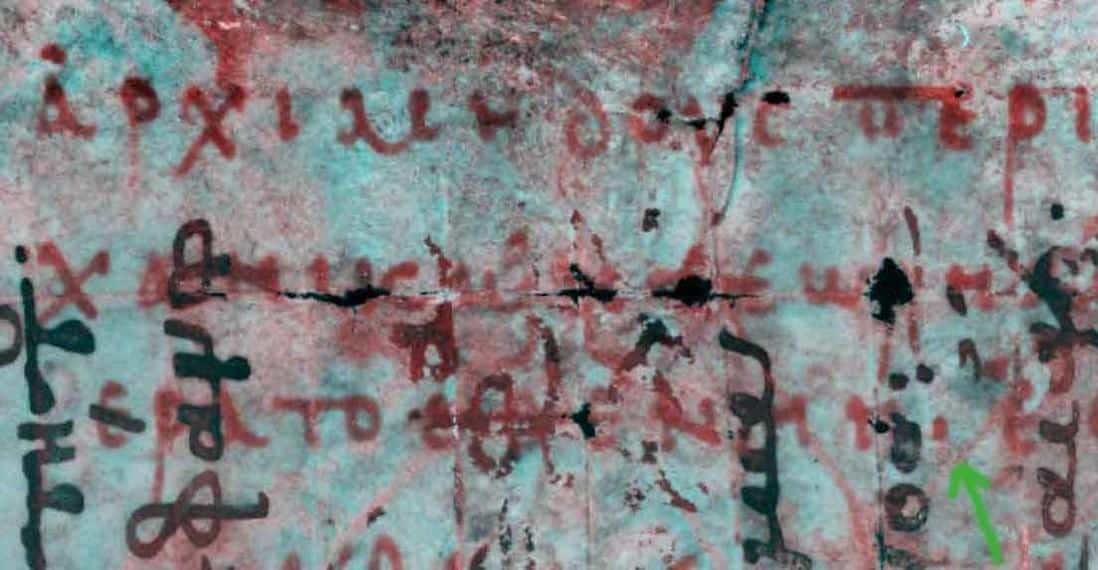

Archimedes, one of ancient Greece’s most famous and influential physicists and engineers, left a legacy of writings that had been thought to be lost to time. Much of his work only survived through copies and translations by scribes. One of the most famous fragments of Archimedes’s writings was the Palimpsest, a manuscript which by the 12th century a monk had overwritten and repurposed as a book of prayers.
To discover the writings of Archimedes in the manuscript, scientists used the Stanford Linear Accelerator Center to reveal the iron content of the ink written under the monk’s prayers. The method used focused X-rays which are created by electrons traveling near the speed of light, causing the the iron in the ink to fluoresce, lighting up Archimedes’s writings.
This effectively allowed scientists to uncover the writings on Archimedes’ palimpsest, which had been lost since the 12th century.
Remarkably, the method used by the team of scientists to uncover the hidden writings of the Greek scientist allowed them to uncover the only two copies of two major theories by Archimedes, “The Method of Mechanical Theorems,” and “On Floating Bodies.”
In “The Method of Mechanical Theorems” Archimedes wrote about how experimenting with mechanics inspired his mathematical accomplishments and views. In “On Floating Bodies” Archimedes wrote about the principles of buoyancy, that is, the upward force exerted by a fluid on an object submerged in it. This force opposes the weight of the object, making objects that float feel lighter.
Archimedes’ manuscript also contained diagrams. Despite not being drawn by the man himself, the manuscript is “the only one that contains diagrams that may bear any resemblance to the diagrams Archimedes himself drew in the sand in Syracuse 2,000 years ago,” according to William Noel, the head of the project.

It is important to note that the Archimedes Palimpsest resurfaced in an auction in 1998, and scientists have been working for decades to reveal the hidden texts. Work on the manuscript with the particle accelerator started two decades ago, in 2004.
The method has already unveiled three pages that had been previously unread, but the remaining sections could take another four years to decipher.
Many scholars also believe that ironically, despite causing issues for modern historians and archaeologists, the monk who wrote over Archimedes’ writings, may have inadvertently preserved them for the better. The monk had overwritten the writings because he needed the parchment of the original manuscripts to create his book. Indeed, this is the reason why it is called a palimpsest because the manuscript was used twice.
